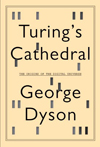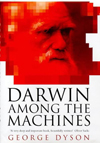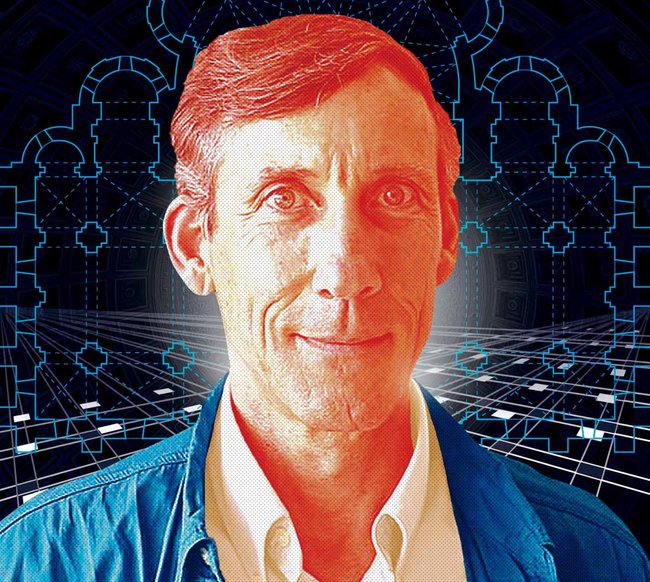George Dyson: The Origins of the Digital Universe

 |
Talk by George Dyson Wednesday, March 7, 2012 @ 7 PM Moderator Computer History Museum |
Books by George Dyson  |
Turing’s Cathedral: The Origins of the Digital Universe
Dyson sheds new light on how the digital universe as we know it was born — the group of scientists and their government-funded lab at the Princeton Institute for Advanced Study in the 1940s and 1950s where a group of eccentric geniuses, led by John von Neumann, gathered to conceive the theoretical universal machine, an idea first proposed by genius mathematician Alan Turing. The computer that they built not only led directly to the hydrogen bomb, but also spawned the 20th-century technology thatevolved into the digital universe we know today.
 George Dyson was described by the New York Times as “looking backward to bring new technologies into focus” as Sean McCabe’s wonderful portrait of Dyson for the NY Times conveys.
George Dyson was described by the New York Times as “looking backward to bring new technologies into focus” as Sean McCabe’s wonderful portrait of Dyson for the NY Times conveys.
Dyson works at the intersection of technology, environment and society to focus a critical lens on the history of computing, the development of algorithms and intelligence, communication systems, and space exploration. His literary craft constructs the historical context to examine how technology evolves in and with society, provoking questions about how technology, such as the Internet, could evolve in the future.
Dyson has been Director’s Visitor at the Princeton Institute for Advanced Study and a contributor to the Edge Foundation. George Dyson is the son of the theoretical physicist Freeman Dyson and mathematician Verena Huber-Dyson, the brother of Esther Dyson, grandson of British composer Sir George Dyson and father of Lauren Dyson. When he was sixteen he went to live in British Columbia to pursue his interest in kayaking, lived in a treehouse at a height of 30 metres built from salvaged materials on the shore of Burrard Inlet, became a Canadian citizen and spent 20 years in British Columbia, designing kayaks, researching historic voyages and native peoples, and exploring the Inside Passage.
He is the author of Project Orion: The Atomic Spaceship 1957-1965 and Darwin Among the Machines: The Evolution of Global Intelligence, in which he expanded on Samuel Butler’s 1863 article of the same name, suggesting that the Internet is a living, sentient being. Dyson, the subject of Kenneth Brower’s 1978 bookThe Starship and the Canoe, was the founder of Dyson, Baidarka & Company, designing Aleut-style skin kayaks, and he is credited with the revival of the baidarka style kayak. He now lives in Bellingham, Washington.
His most recent book, Turing’s Cathedral: The Origins of the Digital Universe (2012) has been called “a creation myth of the digital universe.”
